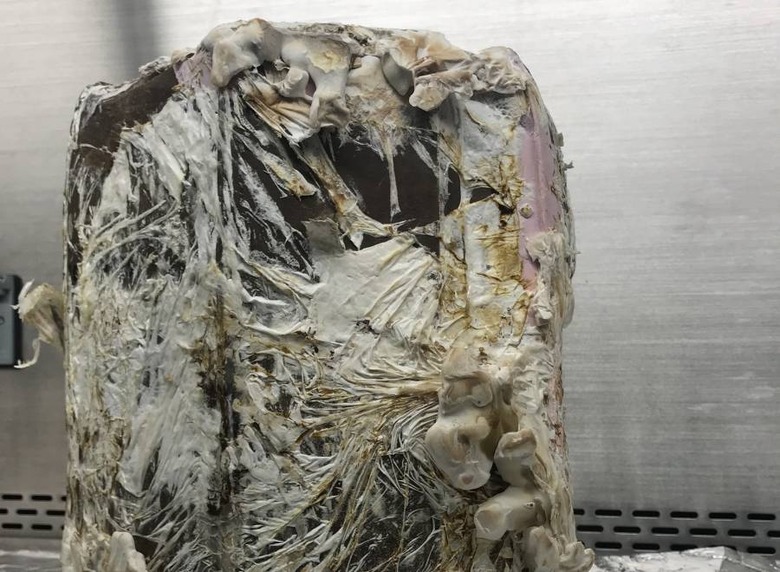NASA Project Envisions Space Houses Made Out Of Fungus
NASA's Ames Research Center in California is developing and testing prototype technologies that may enable future explorers to 'grow' their own houses for use in Moon and Mars colonies. The system would involve the mycelia produced by a fungus — the white thread-like structures that grow underground before eventually producing the fruits we refer to as mushrooms. These technologies also have the potential for creating sustainable structures on Earth.
Using mycelium for sustainable packaging isn't a new idea, but the myo-architecture project underway at the Ames Research Center takes things a step further by testing the mycelia as a core component in creating environmentally friendly and easily produced housing and other structures for use on the Moon and other planets. The space agency has shown off a 'stool' grown from mycelia (below) and bricks created partly from the same fungus (above).

One of the biggest benefits that'll come from using mycelia to construct houses is energy savings. Rather than having to ship the housing components to space, using up fuel and space, teams could simply grow the structures themselves once they get there. This would also eliminate the need to disassemble and move around the structures on the Moon and Mars; teams could simply regrow whatever they need whenever they need it.
Of course, astronauts wouldn't start from scratch — fungus can be tricky to grow on Earth and will no doubt have its issues in space. Rather, astronauts would be shipped with the basic structure for the habitats; they would already have the mycelia in place and would only need to be watered to trigger the growth. NASA stresses that this structure would isolate the fungi to keep it from contaminating the surrounding foreign landscape.
Cyanobacteria may be used to produce the oxygen needed for mycelia to grow, according to NASA. The space agency describes a habitat that includes a dome and three layers, the outer most made from frozen water to help protect against radiation while also watering the cyanobacteria layer. The innermost layer would be the mycelia, which would form a sturdy structure.
